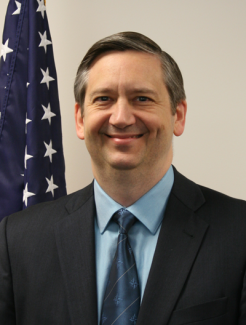As the new Director of the Environmental Modeling Center (EMC), I have the pleasure of leading nearly two hundred world-class scientists, engineers and other staff in developing, transitioning, improving and maintaining a suite of global and regional environmental models to support the National Weather Service (NWS) mission of the protecting life and property for our country. To meet the challenges of this mission, EMC has formed strategic partnerships with numerous community organizations over the years to collaboratively manage the existing suite of models, as well as to build the next generation of environmental models. The DTC has been a vital partner for developmental testing, verification, and community support activities related to large segments of EMC’s modeling suite. While the genesis of DTC began with WRF and so originally focused on regional models and related applications, the DTC has begun to expand their efforts into global modeling in support of the Next Generation Global Prediction System (NGGPS). In particular, DTC has formed a Global Model Test Bed (GMTB) to support NGGPS development on a variety of tasks, most notably to assist in the development and testing of Common Community Physics Package and support for an associated interoperable physics driver.
While the first step of the NGGPS program will be to migrate the legacy spectral model dynamic core of EMC’s Global Forecast System (GFS) to the Finite Volume Cubed Sphere version 3 (FV3) from NOAA’s Geophysical Fluid Dynamics Lab (GFDL), this represents much more than just a dynamic model core change to the global model. Instead it represents the first step toward migration of EMC’s modeling suite to a unified modeling system across both spatial (mesoscale/regional and global) and temporal (weather, sub-seasonal and seasonal) scales. With their legacy of mesoscale/regional applications and the new global modeling work under the GMTB umbrella, the DTC is ideally situated to play an integral role in helping EMC and NOAA evolve our legacy modeling suite towards a unified modeling system.
The evolution towards a unified system is more than just a NOAA imperative; it is a National one. As such, I am happy to report that we recently brought the vast majority of NOAA organizations involved in model research, development, testing and operations together with several of our key national partners for a November meeting at the David Skaggs Research Center in Boulder, CO to start developing a short-term strategy for a National unified modeling system. In addition to EMC (who organized and chaired the meeting), the other NOAA participants included 8 NOAA labs from the Office of Oceanic and Atmospheric Research (OAR) and the National Ocean Service (NOS); the NOS Center for Operational Oceanographic Products and Services (CO-OPS); the new NWS Office of Water Prediction (OWP); and 3 program offices from NWS and OAR. Representatives of these NOAA organizations were joined by members of 3 Labs from the National Center for Atmospheric Research (NCAR), including the Research and Applications Lab (RAL) of which DTC is a part; the NASA Global Modeling and Assimilation Office (GMAO); the Naval Research Lab (NRL); and the Joint Center for Satellite Data Assimilation (JCSDA). All these organizations came together with the intent to begin development of a Strategic Implementation Plan (SIP) that can orchestrate collaborative activities over the next 2-3 years under a single, coordinated “play book”.
Following this successful meeting, the next steps will be the formation of working groups composed of experts from each of these organizations, other partner organizations, and members of the broader R&D community to tackle specific functional areas of the SIP, to include such areas as governance, system architecture, model dynamics, model physics, data assimilation, and post processing, to name a few. The output of these working groups will be brought together in a public community workshop, targeted for Spring 2017, to pull together the first draft of a comprehensive, integrated plan. The power of this approach will be to harness the collective resources of many of our country’s top R&D institutions along with other partners from the broader research community, who can all work together under a single, coordinated plan towards a common goal of building a truly National unified modeling system. I and the other members of the Environmental Modeling Center look forward to working with the DTC and our other strategic partners as we work towards this common goal.
